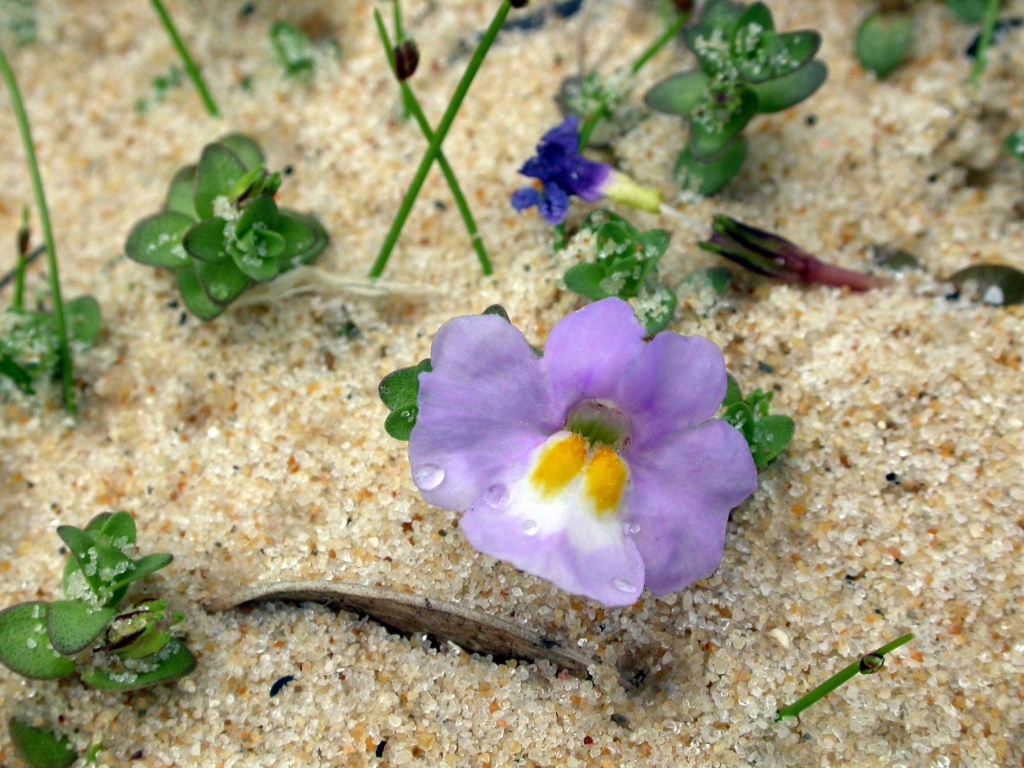Thyridia repens
(R.Br.) W.R.Barker & Beardsley Creeping Monkey-flowerTerrestrial or occasionally semi-aquatic annual or perennial herb, glabrous except for sessile glands, usually prostrate, rooting at nodes and forming mats, when submerged erect to 20 cm high and/or with erect branches arising from prostrate parts. Leaves not joined at nodes, lamina c. ovate, usually broadly so, mostly 1–5 mm long, 1–3 mm wide, apex acute to obtuse, base more or less rounded, margins entire; petioles to c. 1 mm long. Flowers solitary in axils; pedicels 1–10 mm long. Calyx 2.5–5 mm long, teeth almost equal, c. 0.5 mm long; corolla 2-lipped, with the limb blue, purple or pink, tube 5–10 mm long, white or yellow sometimes with red spots, lower lip c. 4 mm long with a prominent yellow raised palate at the base, closing the mouth. Capsule globose to ellipsoid, c. 5 mm long. Flowers Sep.–Apr.
MuM, Wim, GleP, Brid, VVP, VRiv, MSB, RobP, MuF, GipP, OtP, WaP, Gold, CVU, DunT, EGL, EGU, WPro, OtR, Strz. Also WA, SA, Qld, NSW, Tas. Widespread in swampy sites, open margins of lakes, watercourses, or in temporarily wet areas, often in brackish to quite saline sites (e.g. margins of coastal and inland saltmarshes).
There is considerable variation in the robustness and orientation of the stems, and the size of the leaves and flowers. This variation seems to be more environmentally than genetically influenced.
Barker, W.R.; Harden, G.J. (1999). Mimulus. In: Walsh, N.G.; Entwisle, T.J., Flora of Victoria Vol. 4, Cornaceae to Asteraceae, pp. 491–494. Inkata Press, Melbourne.
 Spinning
Spinning



